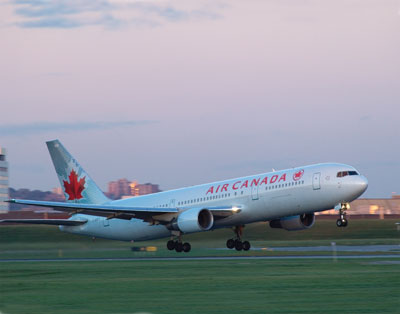
Features
Operations
At The Gate: Air Canada seeking fun in the sun
Third time lucky? Air Canada has previously entered the low-cost market with Tango and Zip, both of which lasted two years. Now, it appears the carrier is taking another crack at that segment of the market by launching another low-cost airline.
May 6, 2011 By Brian Dunn
Third time lucky? Air Canada has previously entered the low-cost market with Tango and Zip, both of which lasted two years. Now, it appears the carrier is taking another crack at that segment of the market by launching another low-cost airline.

|
|
| “It’s an astute move on Air Canada’s part, because they’ve been steadily losing market share to discount-oriented airlines.” PHOTO: air canada |
Neither Air Canada nor the Air Canada Pilots Association would comment, but industry analysts weighed in with their thoughts. “It’s been done before with Tango and Zip, which didn’t last long, but Air Canada is a different creature now than seven or eight years ago,” says Karl Moore, a professor at McGill University’s Faculty of Management. “They’ve got lower costs in their system and they’ve learned something from their past experiences.”
Other mainline carriers have gone the low-cost route with varying degrees of success, notes Moore. “Qantas has done it the best and both BA (British Airways) and Lufthansa have also enjoyed some success,” he says. “The reason airlines do it is to recover market share they’ve lost to low-cost competitors.” Australia’s Qantas did it with Jetstar Airways set up to compete with Virgin Blue Airlines with a mix of wide bodies and narrow bodies.
“A lot of different carriers have tried it and not too many have survived. In theory, it sounds good to lower your cost structure, but for whatever reason, they always have challenges,” says analyst David Tyreman of Cannacord Genuity Capital Markets in Toronto. He notes the low-end market segment uses a different business model from a legacy carrier, requiring much higher volumes to compensate for thinner margins and the lack of business travellers.
The first obstacle is to get clearance from the various Air Canada unions, since the proposal calls for a different contract for new hires and new pilots would not be covered by a host of benefits enjoyed by current ACPA members, and affecting pay, vacations and crew-rest facilities.
The product Air Canada is looking at is essentially for sun destinations and not the domestic market, according to analyst Rick Erickson of Calgary-based R.J. Erickson & Associates. But he maintains it will be an airline within an airline and not have a different brand identity so as not to confuse travellers. “It’s an astute move on Air Canada’s part, because they’ve been steadily losing market share to discount-oriented airlines like WestJet, Sunwing and Air Transat.”
Erickson also believes WestJet’s success with its vacation routes in just two short years prompted Air Canada to respond. What’s also driving the move is that a number of Canadians have bought properties in Mexico, Latin America and the Caribbean, and to get value out of them, they have to use them three or four times a year, says Erickson. Most travel with family and are looking for the cheapest fares.
Air Canada plans to use Airbus A319s, A320s and Boeing 767s currently in its fleet whose capital costs are largely written off, allowing them to make money, Erickson notes. “And because of that, they don’t have to have them in the air 15 hours a day like other low-cost carriers.”
These aircraft will be withdrawn from the mainline fleet and eventually be replaced by Boeing 787 Dreamliners, making them redundant. And since there’s little demand for older aircraft on the open market it makes sense for Air Canada to use them for its low-cost model. “But if oil hits $150 a barrel, it’s a no-go with these older aircraft,” says Erickson. He expects to see the airline reconfigure or eliminate its business class in the new business model to fit in more seats and reduce costs further.
Meanwhile, over on the island . . .
Air Canada isn’t the only Canadian airline with good news on the horizon. Porter Airlines is also celebrating, at least for now, due to the fact United Airlines has abandoned its plans to launch a new service from Billy Bishop Toronto City Centre Airport. The main reason? The high cost of fuel, putting its 16 landing slots up in the air. The carrier may consider service from Billy Bishop Toronto City Centre Airport sometime in the future, but in the meantime will be forfeiting its current landing slots.
Erickson suspects there’s more than higher fuel costs behind the decision not to launch. He believes the decision by U.S. customs not to install a customs clearance facility at the airport nixes the time advantage United would have had over its competitors. Now, all passengers will have to clear customs at their U.S. destination instead of in Toronto.
Brian Dunn is a Wings writer and columnist.